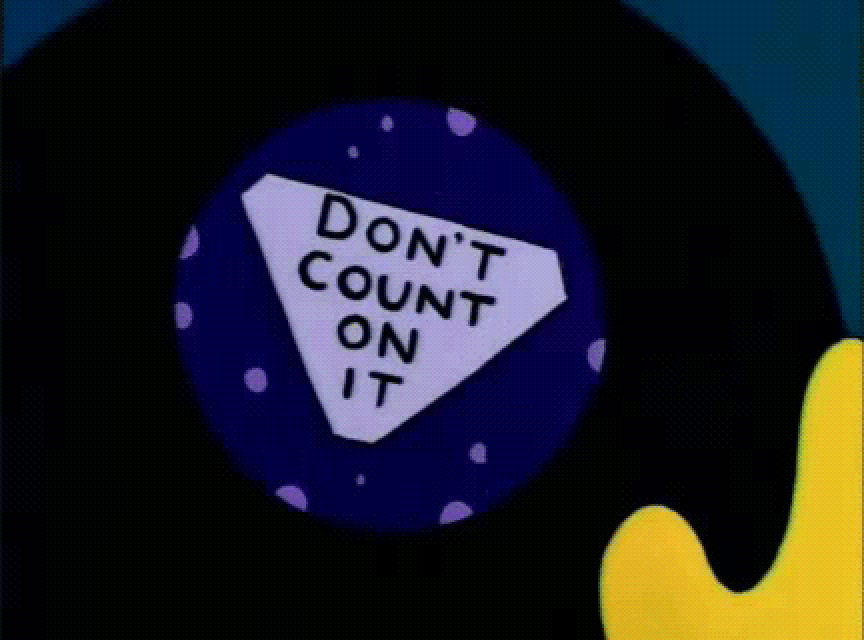 In just the third episode, Dan spends an hour with Brian Dean of Backlino fame delving into detail about Backlinko’s success. The advice and examples are brilliant.
In just the third episode, Dan spends an hour with Brian Dean of Backlino fame delving into detail about Backlinko’s success. The advice and examples are brilliant.
Another SEO podcast? Really?
Yes, really. This one is good. Really good.
I had my doubts at first too, but Experts on the Wire is excellent so far. After just a few episodes, it’s clear that Dan is covering all the major topics you’d hope for.
The best part of “Wire” is that Dan won’t let it become an SEO echo chamber, repeating the same talking points repeated ad nauseam.
Instead, Dan takes great care to keep topics and questions relatable to business owners, startup founders, and young marketers just getting their start in the industry.
No SEO PhD required.
So without further ado, here’s what you’re missing.
Here’s a quick write-up of Episode 3 with Backlinko. Read this and tell me you don’t need more.[/vc_column_text][/vc_column][/vc_row][vc_row full_width=”stretch_row”][vc_column][vc_column_text]
Episode 3 with Brian Dean
Backlinko needs to introduction to most of the SEO world. But for readers who don’t spend their nights crawling SEO forums (doesn’t everyone?), here’s some important background info on who Brian Dean is. Any why we should listen to him.

Backlinko.com Stats
- SEO training company, with a hugely successful blog
- 150,000 unique visitors per month (10,000 may be considered above-average)
- 70,000 email subscribers
How his site is set up
Visit Backlinko.com and you’ll see 3 navigation options:
- About
- Contact
- Proven SEO Tips
That’s it.
No “hire me” or anything like that. Just a blog and an email newsletter.
No services page, nothing to buy
According to Brian, too many options kill conversions. More than 2 or 3 options, and conversions start to drop.
His priority #1 is sign up for his newsletter. Priority #2 is for visitors to read his blog.
So..
Why distract people with a list of services that most won’t buy anyway?
The Backlinko brand is built on expertise. Brian writes and publishes insanely helpful posts once a month or so. That’s all the sales driver his website needs.
Reducing the number of options on every page
But what about companies (like ours) that offer more than one service? How do we sell?
This one borders on user experience. Brian’s philosophy is “do one thing and do it well”
But he admits that if it works, then it works—don’t quit on a money-maker just for SEO reasons.
But the idea is clear: to inspire user action, less is more.[/vc_column_text][/vc_column][/vc_row][vc_row][vc_column][vc_column_text]
Be skeptical of SEOs/marketers
We get a bad rap. People who heard about SEO in the 90s or early 2000s think we’re snake oil salespeople.
And some of us are. In fact, most of us are. And they’re giving the rest of us a really bad name.

The ½%
Brian claims (anecdotally, of course) that 99.5% of SEO agencies out there are untrustworthy.
Most aren’t evil, out to take your money. They’re just bad at SEO.
And with Google, one mistake can cost your business months of ranking penalties.
The risks are too high. Don’t hire shady or ineffective SEOs.
How to find a good SEO agency
Try SEO yourself…temporarily.
Even if you want to hire an SEO agency—and you probably should—try to learn the ropes of SEO yourself first.
- Write some blog posts
- Optimize on-page
- Read up on the forums
Learn by doing.
That way, when you finally talk to an agency, you’ll understand what works and what doesn’t, what’s hard and what’s easy, etc.
Basically, the only way to know good SEO is to know good SEO. Arm yourself with knowledge and experience.
“You can’t fail fast enough” (but don’t play with clients’ money)
SEOs should always be learning. Failure teaches us more than success sometimes.
Brian advocates failing quickly and often. Each failure—as long as you keep going—better prepares you for your ultimate success.
But.
Don’t play with clients’ money.
If you fail with whitehat techniques, the worst case scenario is the project didn’t improve ranks. But since it’s whitehat, you won’t lose anything either. All you lost was money.
But understand your clients’ aversion to risk:
All you have to lose is a client contract. Your client could lose their entire business model, not to mention the fees they paid you.
Ask your clients to choose:
- Something safe & reliable like the Skyscraper Technique
low financial risk, no rank risk, moderate rank reward
—OR—
- Something safe but more of a long-shot
still no rank risk, this time with high financial risk, but also high rank reward
Content Creation Process
About 19 minutes into the SEO podcast, the topic turns to content. What does Backlinko do to create his outstanding content, and how does he go about it?
First things first: read this. Brian and his partners analyzed one million Google search results.
It cost $20,000 and took hundreds of hours.
And it’s amazing.
But not all the content Brian publishes (or you publish) needs to cost that much time and money.
Read on.

1. Goal: start at the end
Create with the goal in mind. Brian’s goals are links, shares, and comments, which in turn lead to email signups (more on email marketing later).
Start with a goal: publish something that will gain links, shares, and comments.
2. Idea: how to you set out toward your goal?
But what should you publish? Now you need an idea.
Analyze what’s already working and look for patterns.
In Brian’s case, he noticed that posts with original data gain lots of links and traction online.
So now the idea is: publish data that will gain links, shares, and comments.
Ok, then what?
3. Weigh the opportunity (and competition)
You don’t have to be the first. You just have to be the best.
Brian, influential though he is, set out to outrank Moz and Searchmetrics with his 1 million study. No small feat.
Sure, not everyone could topple Goliath. But the opportunity is still there.
If “StevesSEOblog.biz” wants to outrank Moz, that’s a tall order. But even if Steve comes close—gaining links and shares—he’s undoubtedly just multiplied his search visibility.
4. Research: get your facts straight
You don’t have to publish a million points of data. Even if you write a simple SEO podcast roundup (ahem!), you need to do some research.
Spend a few hours—AT LEAST—reading up on related articles and influencers in the topic/industry. Thought of something relevant you want to reference? Go back and re-read it.
No one wants to read (or link to/share) a few hundred words of spin or brain dump.
Your content needs to be thorough, well-sourced, and compelling. Even the best writers can’t do that all from the top of their heads.
Do your research.
5. Pre-outreach: contact potential linkers/sharers BEFORE publishing
(You should also do outreach after publishing. But you probably already knew that. Don’t quit post-publishing outreach. Just add some pre-outreach to your process too.)
Brian’s mindset for pre-outreach is “Hey, I have this thing, and I thought of you.”
The content isn’t out yet, so whoever you’re contacting can’t see it or link to it yet. It’s just a way to pique their interest and prime them for the inevitable post-publish link/share request.
Bonus points if you can relate it to something they’ve already done:
Hey, I saw your thing ____. That was awesome! Thanks for that.
By the way, I have this ____ coming out. Do you want to see it?
When you hit publish, email whoever said yes to your pre-outreach request.
Don’t ask for a link or a share, just say “here it is!” If they like it, they’ll share it.
6. Post-publish outreach: spread the word
Brian emails 200+ people during pre-outreach for each new blog post.
His yes-rate is about 50/50, so he’ll have about 100 yesses in the queue who have already expressed interest in seeing (and potentially linking/sharing) his newly-published content.
He then emails those 100 people and they being to spread his content for him.
He also emails his 70,000-member email list. You probably don’t have 70,000 email subscribers.
Neither do we.
But we do have some. So we email them to promote our material. And you should too.[/vc_column_text][/vc_column][/vc_row][vc_row][vc_column][vc_column_text]
Email List
About halfway through the SEO podcast, Brian goes into detail about his email list: how he uses it, why, etc.

Time & effort required
Brian has 70,000 email subscribers. Managing that list takes him a lot of time. A lot.
But it doesn’t have to.
You, Brian, or any other publisher could take 12 blog posts you’ve already published and schedule them to send out once a month.
This is called a drip campaign.
(Zapier has a great guide to drip marketing and email marketing in general. It’s awesomely thorough. Check it out here.)
Brian, however, puts all his eggs in the email basket. So he spends lots of time improving his email. You could too, and it would probably work well.
But how do you make sure people are actually reading your emails?
How to get into the personal inbox (out of Gmail’s Promotions tab)
This might be the best tip Brian gives during the whole Experts on the Wire episode.
Gmail users often have 3-5 tabs in their inbox, one of which is called Promotions. Most email newsletters end up there.
It’s a graveyard.
No one scans through their Promotions tab looking for cool stuff to read. If your newsletter gets sent there, it’s dead.
How do you get out?
Personalization and interaction.
Brian lists 3 things he strives for (and one that he avoids) to ensure his emails reach the personal tab.
Always
- Replies — no one replies to a newsletter. Most of them are sent from noreply@whatever.com anyway. Ask users to hit the reply button and it sends a strong signal to Google that the user WANTS this email.
- Clicks — Every email Brian sends has a link in it. If users click the link, Google notices. It registers an interaction with that email and sender. More good signs.
- Opens — This one’s standard, but it’s important. If they never open your emails, Google will eventually stop delivering them (they’ll end up in Promotions or Spam, probably)
Never
- Linked image — DO NOT include an image linked to a website. Instant Promotions tab.
- Bonus: images at all — Most humans don’t put images in their emails to each other. So be careful if you use images at all.
Outreach tools
Amazingly, Brian says he doesn’t really use any. Just the basics like Google Docs.
There is a testing tool that he likes, by Litmus, called Gmail Tabs. It’s not 100% effective, but it gives you a good idea if your email is likely to hit the Promotions tab.
Otherwise, Brian’s recommendations for tools are: good old-fashioned hustle.[/vc_column_text][/vc_column][/vc_row][vc_row][vc_column][vc_column_text]
Opportunity Gaps
In SEO marketing, a gap is an opportunity that people haven’t seen: an area that isn’t overloaded with competition—yet.
Brian gets into two opportunity gaps, about 40 minutes in on the podcast.

Frequency of publishing
Publish less often.
The “Google wants fresh content” idea is a myth.
Tons of business blogs out there are writing “me too,” 500-word articles that don’t stand out. They’re filler pumped out for the wrong reasons.
Blah.
Instead, take more time to research, design, and promote your content. Go for quality, not quantity.
Publish long-form posts (2,000+ words), visual content (infographics), and a combination of both.
The combination is key.
A beautiful infographic with tons of valid data is an excellent start. Combine that with 2,000 words beneath it, and you’ve got a killer formula for winning content.
“Skyscraper Technique” and “Prop Words”
Ever heard of those?
Probably, if you’re into SEO at all.
The Skyscraper Technique is Brian’s term. He made it up and gave it to the world as a shortcut. It means “publish something that’s better than the best.”
He could have trademarked it, but that would be dumb. It would take more time and money to file the trademark, and it wouldn’t gain him anything (people just use the term anyway—they’re not going to pay him royalties or something). So he gave it away to the SEO community.
Prop Words is a similar term that Dan Shure himself made up. These are examples of branded concept content.
It’s like this…
Take your idea and distil it down to its simplest form. That’s usually called an elevator pitch—an explanation of your idea/business short and sweet enough that you can deliver it in the time it takes to ride an elevator.
Then come up with a mental image to symbolize your idea. In Brian’s case, that’s skyscraper. Everyone knows what it is and can easily picture it in their mind.
Collect compelling examples of how your idea works—enough that you can convince people that your technique actually works.
Use your mental image as a shortcut:
Trying to tell people about “be better than the best”? Call it “skyscraper.”When they ask “what’s skyscraper?”
When they ask “what’s skyscraper?” Boom, time for your pitch:
“It’s like walking down a city street and seeing huge skyscrapers. No one wants to build the second tallest building in the world. They all want to be the tallest. Find the tallest skyscraper in your niche and build on top of it.”
Not every branded concept nickname works, though. That needs some marketing research in and of itself.
Make sure you listen to Brian explain it on the podcast to hear why.[/vc_column_text][/vc_column][/vc_row][vc_row][vc_column][vc_column_text]
Diverse Group of Domain Links
Brian says in his Search Engine Ranking factors study (the one where he studied 1 million search results) that:
“Getting links from a diverse group of domains is extremely important for SEO.”
Ok. But what does that mean?

Google wants to see different sites endorsing your page. The more domains that link to you, the more endorsements you have.
The number of unique referring domains was the strongest correlation in the entire Backlinko study.
This is important.
If 1 website links to you 10 times, that counts LESS than if 10 websites link to you 1 time each.
A note on semantics
The word “diverse” can be confusing here.
Brian is NOT saying that the websites you get links from should be conceptually or topically different from each other.
It’s perfectly fine if they’re all in the same nice and industry.
The point is that you should try to get as many different domains as possible. Not just as many links as possible, but as many domains.
Links from smaller sites
Everyone wants a link from the New York Times. And why wouldn’t they? It’s the holy grail of SEO.
But.
It’s easier to get links from 100 or 1,000 smaller sites (or probably 10,000-100,000) than to get one little link from NYT.
And, Brian’s study confirmed, you’re probably better off getting hundreds or thousands of “little” backlinks than one link from NYT.
Obviously, take a NYT link if you can get it. But don’t pass on small sites just because they’re not the Times.
Taken in aggregate, those little links can actually help more than one big one.
Think long-term
Dan added a really going point on this subject: just because the “little” link you get now is from a small, low-authority site doesn’t mean it’ll stay that way.
If that site grows in popularity and authority, so too does the link back to you.[/vc_column_text][/vc_column][/vc_row][vc_row][vc_column][vc_column_text]
Traveling/Nutrition Background
Brian Dean, before becoming a full-time marketer, was studying to become a nutritionist. He actually went to Tufts right here in sunny Massachusetts.
He also has lived in numerous places around the world.
Brian talks about how his travels and science backgrounds have helped him in marketing.

Data-driven science
Scientific thinking is (mostly) the standard in academia. Unfortunately, it’s not in every day life.
Brian’s science education trained him to be cautiously skeptical of any claim before seeing data and evidence to back it up.
Design and creativity will always have a place in marketing, no doubt.
But as people get better at sifting through nonsense marketing campaigns, real data will set good campaigns apart.
You can’t argue with science.
International sales
“The #1 lesson is that there’s a lot of money to be made around the world.”
If your product or service can be sold internationally, you’re leaving HALF the money on the table if you focus only on US sales, according to Brian.
Yes, that will likely mean working with non-native English speakers.
But Dan’s tip is to use simple language. When these customers find you, they’ll have an easier time understanding or translating your content if you keep it simple.[/vc_column_text][/vc_column][/vc_row]
